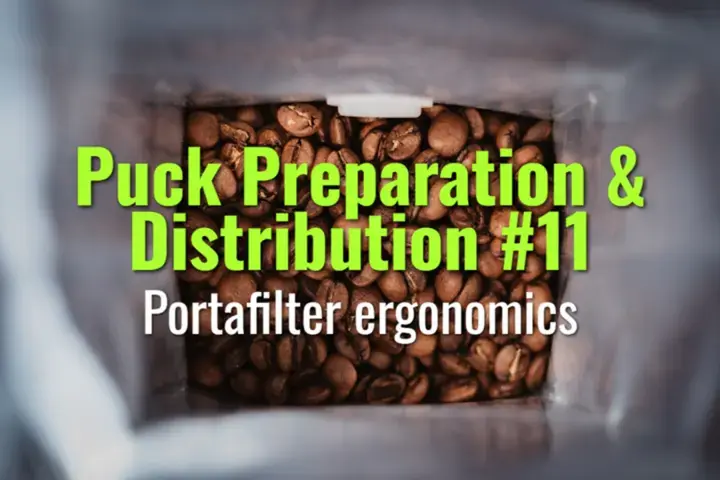Portafilter ergonomics
How proper portafilter ergonomics reduce barista fatigue, improve workflow efficiency, and support consistent puck preparation.
- Coffee Basics Nerds
- 2 min read

Why Ergonomics Matter
- Espresso preparation involves repetitive movements: dosing, distributing, tamping, and locking in.
- Poor ergonomics can lead to wrist, shoulder, or back strain.
- Proper technique supports both barista health and consistent puck prep.
Key Ergonomic Considerations
-
Grip and Handling:
-
Hold portafilter by handle with neutral wrist alignment.
-
Avoid excessive twisting or bending when moving between grinder, tamping mat, and grouphead.
-
Tamping Position:
-
Use a tamping mat or station at hip height to allow straight-arm pressure.
-
Keep wrist straight and shoulder engaged when tamping.
-
Weight Balance:
-
Portafilters are heavy (≈500–1000 g when filled).
-
Supporting with one hand while tamping with the other prevents tilting and puck unevenness.
-
Workflow Layout:
-
Place grinder, tamping station, and espresso machine in a triangle setup for minimal movement.
-
Keep tools (WDT, distributor, tamper) within easy reach.
-
Handle Design:
-
Ergonomic handles reduce wrist strain during locking/unlocking.
-
Bottomless portafilters improve visibility but may feel less balanced; practice handling.
Best Practices
- Use consistent, smooth motions to reduce stress and error.
- Alternate tasks between hands when possible to avoid repetitive strain.
- In high-volume cafés, consider calibrated or automatic tampers to reduce fatigue.
Summary
Portafilter ergonomics are essential for both barista well-being and consistent espresso preparation. Neutral wrist position, proper tamping posture, balanced handling, and efficient workspace design minimize strain and support long-term quality in daily service.